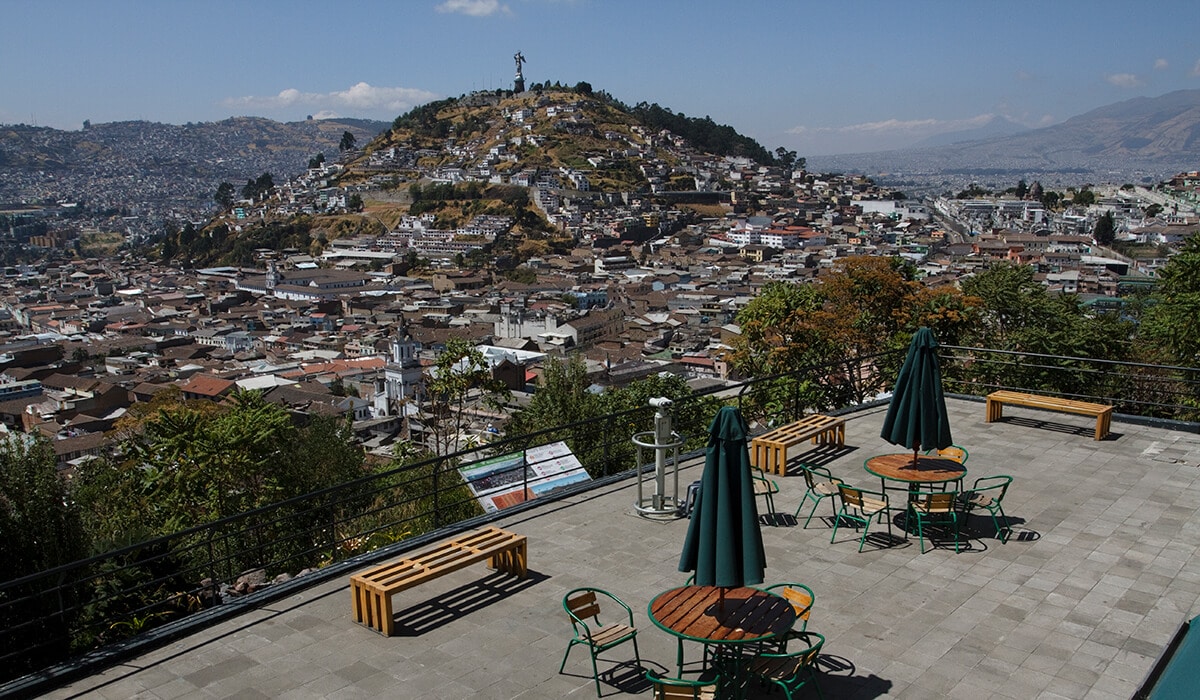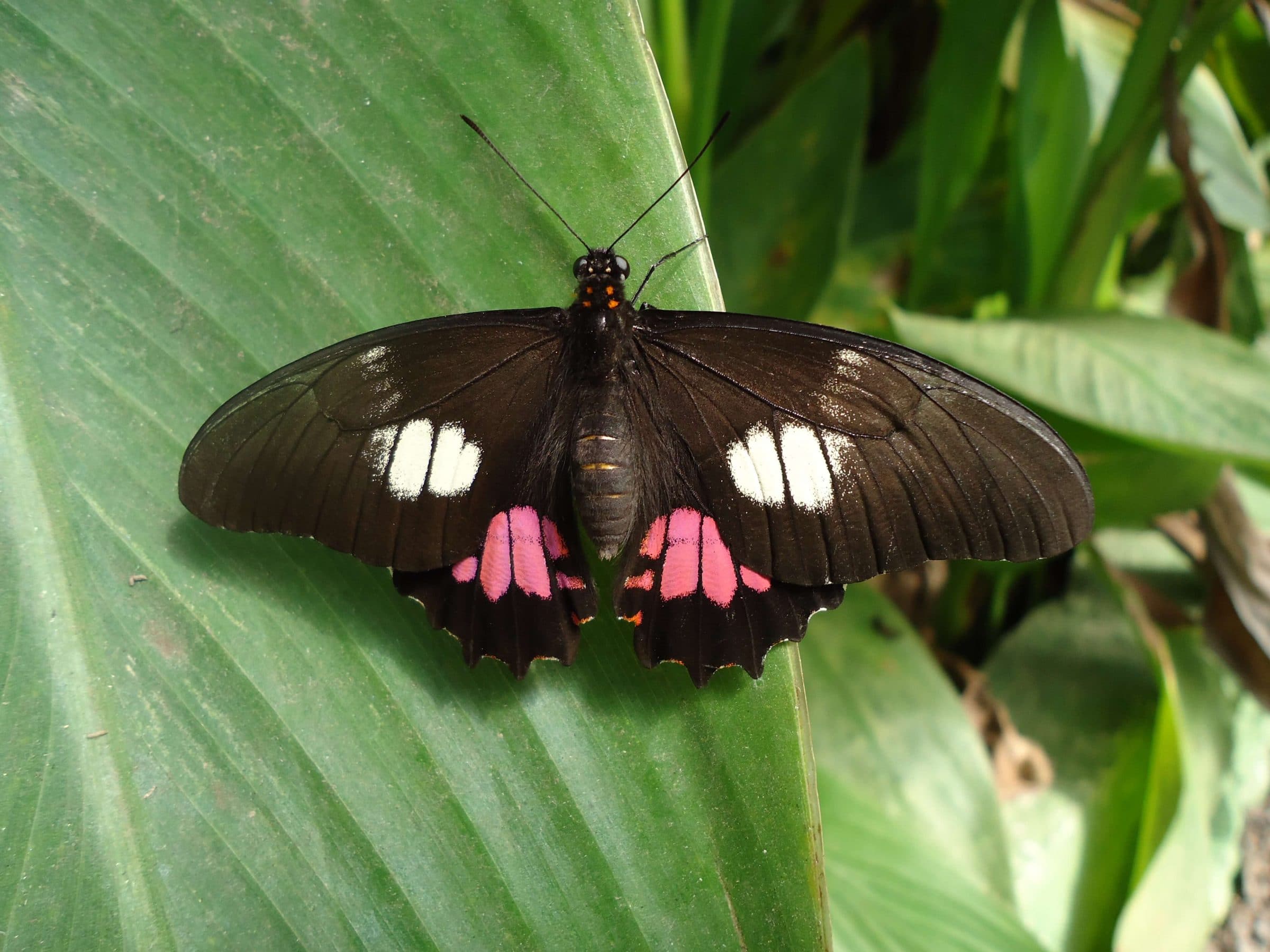When you think of Ecuador’s capital, you may be thinking, hmm Quito, how many days should I spend there? Ecuador’s outstanding offroad locations might call you to hike mountains, swim in the Pacific Ocean, or kayak white water rivers, but I can guarantee you there are plenty of exciting places to visit and things to do while in Quito. With this article I’ll help you plan your visit, whether you have one day, one week, two weeks, or more in Ecuador’s capital. So, how many days to visit Quito? As many as possible!
How Many Days to Spend There?
Quito is a large city (2.6 million inhabitants), and your decision about how many days to spend there should be connected to three central factors:
- Your travel schedule
- Your interest in the activities you can do in Quito
- Your budget
Be aware that traffic in Quito has become increasingly difficult (mostly during rush hour in the morning and afternoon), so while distances are relatively short, 10 kilometers (6 miles) in traffic might take you up to two hours. Keep that in mind when you plan your trip, especially if you make your decisions based on Google Maps (I like using Waze to see the traffic).

Visiting Quito in One Day
If you plan on visiting Quito in one day, I suggest one of these three possible day trips.
- Trip 1 → “Middle of the World”
- If you look at the #Ecuador hashtag on Instagram, you are likely to see lots of tourists at the “Mitad del Mundo” (Middle of the World) Monument in Pomasqui, about 40 minutes away from Quito’s Downtown. The Monument itself is not located at the Equator, but don’t worry, I will tell you how to get to the real Equator line. Once at the Middle of the World you can find tons of activities to do. Definitely visit the Monument since it is a beautiful building, and there’s a museum inside the building that showcases key moments in Ecuadorian history, from the Inca conquest to the Spanish invasion, all the way to the 20th century. After visiting the Monument, you can take a public bus ($1.5) in front of the complex, and head to Calacalí, a small town 30 minutes away from Pomasqui where you will be able to see the monument of the Middle of the World that is correctly located at 00 on the Equator. On your way back to Quito, you can stop at Pomasqui to eat empanadas (fried dough pastries, YUM) and “helados de paila,” Ecuadorian ice cream traditionally made in copper pans.
- Trip 2 → Quito’s Historic Downtown
- Quito’s Historic Downtown is one of the best-preserved in Latin America, so take the time to walk the narrow streets and see the beautiful changes in architecture.
- Begin with breakfast at the Mercado Central (“Central Market”), where you can drink freshly squeezed juices (try local fruit “Babaco” → similar to star fruit), and eat a fresh egg sandwich (sánduche de huevo). A combination of those items will cost less than $3.
- After breakfast, head to Quito’s main square: Independence Plaza. If you arrive before 9:30 am (and bring a photo ID with you), you might be able to visit the Presidential Palace and see the Presidential Museum, which showcases the gifts that have been presented to Ecuadorian presidents throughout history. Entering the Palace is free, but there are a limited amount of tickets, so try to get there early in the morning.
- Steps from the Palace you can visit the Basílica del Voto Nacional, one of the most impressive Gothic churches in Ecuador and the Americas.
- So much political and religious history might make you hungry, so you can head to the Saint Francis Square, and decide where to eat lunch. At the Gangotena Hotel, a typical entree will cost between $20 and $40. Here, you will enjoy some of the finest dining Quito has to offer. If you’re on a tighter budget ($8-17 per entree), you can go to the Tianguiz restaurant that is located adjacent to the stairs of the Saint Francis Church. This restaurant is an excellent option, and they serve a good variety of traditional Ecuadorian dishes. After lunch, I recommend you visit the Camilo Egas Museum (Calle Venezuela, N9 02) so you can see the work of one of the most important Ecuadorian painters of the 20th century.
- Quito’s Historic Downtown is one of the best-preserved in Latin America, so take the time to walk the narrow streets and see the beautiful changes in architecture.
- Trip 3 → Rucu Pichincha
- For a more adventurous day trip option, take a taxi ($4-6) to the Teleférico (air gondola), which will cost you $8 round trip. This will take you to the first available summit from the Pichincha mountain range. Once you are up there, you have the choice to simply enjoy the most beautiful view of the city, or venture towards the Rucu Pichincha, an active volcano that sits at 4,794 m (15,728 ft) above sea level. The Rucu is not a technical mountain (you won’t need to climb), but you will need warm clothes. Assuming you walk at a moderate but steady pace, it should take you no more than 3.5 hours from the top of the airlift to the mountain’s summit.
How to Spend a Weekend in Quito
In addition to Trips 1, 2, and 3, here are some suggestions if you plan on staying during the weekend in Quito.
Nightlife
- Known as La Mariscal or Plaza Foch, this area is known as the center of dancing and drinking in the center-north of Quito. There are multiple bars and restaurants in this area, but I recommend Chupitos for a cocktail, and Café Democrático or Bungalows for dancing.
- La Ronda (Juan de Dios Morales street): if you want a loud and authentic experience of Quito’s nightlife, go to La Ronda. Located on the southern side of the Saint Domingo Square, the variety of food, drink, and music at La Ronda will satisfy all tastes.
Theater/Music
- Malayerba Theater Company (Sódiro 345 y 6 de Diciembre) is one of the most established and well-known Ecuadorian theater companies. Malayerba usually has plays running throughout the weekend at 8 pm (Sundays at 6 pm). Their theater is located at the Sodiro street, in front of the Alameda Park. Check out their Facebook page for information about showtimes and prices.
- Patio de Comedias (18 de Septiembre E4-26 Entre Av. Amazonas y 9 de Octubre) — almost 40 years of continuous performances have established this venue as a landmark of scenic representation in Quito. If you enjoy theater, make sure you do not miss this unique experience.
- MicroTeatro UIO (Yánez Pinzón N25-106 y Av. Colón) is one of the newest theatrical spaces in Quito. The theater performs sketches, and follows a model that has been successfully implemented in Miami, Mexico City, and Bogotá. Attendants have a choice between four plays that are performed in circuits and each play lasts approximately seven minutes.
Spending a Week in Quito
If you are spending a week in Quito, you can take advantage of the city’s location to visit surrounding towns. In addition to the three suggested day trips, here are some other trips you could do while in Quito, using the city as your base location.
- Cochasquí Pyramids: located 1 hour away from Quito, the Cochasquí archaeological park is the most important site constructed by the Quitu-Cara indigenous community, the group that inhabited the Pichincha (the province where Quito is located) region before the Inca conquest. The history behind these constructions, and the views there are absolutely stunning. Getting there by public transport is tricky, so I recommend you take a taxi, which will cost you $60 round trip. Entering the archaeological site costs $3, and it is open all week from 8am-4:30pm. Visiting the archaeological site can take you from 1 to 4 hours, it depends which walking tour you prefer. You could also spend the night there, just remember to bring your camping gear.
- Pita Waterfall: This beautiful waterfall is located very close to Quito (10kms/6mi), but the dirt road to get there means you can’t drive too fast. If you leave from Quito’s downtown, it should take an hour and thirty minutes to get to the waterfall’s parking lot. From there, it takes 40 minutes to walk to the waterfall. Entering the site costs $5, and it is open from Monday-Sunday from 9am-5pm. You can get there by public transport; take the bus to Sangolquí (they leave from the Isabel la Católica street, on the side of the Catholic University), and from Sangolquí you can take a taxi ($10) or a pick-up truck ($5). A taxi from Quito will charge you $25-30 one way.
How About a Fortnight?
- If your schedule allows you to stay a fortnight (2 weeks) in Quito, here are some ideas for your visit:
- Mindo: a unique high altitude rainforest that is located 2.5 hours from Quito. In Mindo you can do birdwatching, see a sanctuary of butterflies, and hike across seven different waterfalls. If you want to go by public transport, take the bus from the Ofelia Terminal, it charges $4.
- Guayllabamba and the Guayllabamba Zoo: Guayllabamba is a valley located 50 minutes away from Quito. It’s well known for its warm and dry temperature, delicious potato soup (called locro), avocados, and the Zoo. The Zoo in Guayllabamba is the best kept in Ecuador, and you can see a variety of animals that are endemic to Ecuador, like capybaras (largest rodent in the world!), Cóndor (largest flying bird in the world), and Galápagos turtles. The Zoo is open Tuesday-Sunday, from 9am-4pm, and they charge $5.50. You can take a bus from the Ofelia Bus Terminal to Guayllabamba, it costs $1.75.
- San Pablo Lake: this beautiful body of water will allow you to enjoy one of the most picturesque views in the Ecuadorian Andes. Behind the lake, like the frame for an iconic canvas, sits the Imbabura mountain; a dormant volcano that gives name to the province. In addition to the views, you can eat fresh-caught trout, take horseback-riding trips, or boat trips across the lake. San Pablo is located 1.2 hours away from Quito, and you can take a public bus ($5) from the Ofelia Bus Terminal.
- Ruta de la Máchica (Latacunga): Venture one hour south of Quito, and you will reach Latacunga, the capital of the province of Cotopaxi. Back in the 19th century, Latacunga was the capital of máchica, a flour made out of roasted barley. Due to its inexpensive process, and its high content of energy, máchica was central in the Ecuadorian diet, especially for people who lived in the highlands. I recommend you book a tour with Harika, a group of young entrepreneurs that are commercializing máchica. They will show you how máchica is made, the neighborhoods in Latacunga were the product was milled, and they will have you try some of the products they are making with máchica. The bus to Latacunga leaves from the Quitumbe bus station, and it charges $2.
Whether you have one day, one week, or two weeks in Quito, the capital has an abundance of options for you. Next time you wonder, “how many days to visit Quito?” remember: stay as many days as possible!!





